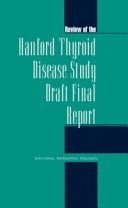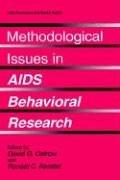| Listing 1 - 10 of 21 | << page >> |
Sort by
|

ISBN: 0195069560 Year: 1992 Publisher: New York Oxford Oxford University Press
Abstract | Keywords | Export | Availability | Bookmark
 Loading...
Loading...Choose an application
- Reference Manager
- EndNote
- RefWorks (Direct export to RefWorks)
Book
ISBN: 0192622870 0192617036 Year: 1988 Volume: vol *31 Publisher: Oxford : Oxford university press,
Abstract | Keywords | Export | Availability | Bookmark
 Loading...
Loading...Choose an application
- Reference Manager
- EndNote
- RefWorks (Direct export to RefWorks)
Causaliteit --- Causalité --- Causation --- Oorzakelijkheid --- Causes and theories of causation. --- Epidemiology --- Research --- Methodology --- Diseases --- Epidemiologic Methods. --- Epidemiology. --- Methodology. --- Epidemiology - Research - Methodology. --- Causation.

ISBN: 072161308X 9780721613086 Year: 1985 Publisher: Philadelphia: Saunders,
Abstract | Keywords | Export | Availability | Bookmark
 Loading...
Loading...Choose an application
- Reference Manager
- EndNote
- RefWorks (Direct export to RefWorks)
Clinical epidemiology --- Epidemiology --- Epidemiologic Methods --- Statistical methods --- Research --- Methodology --- Epidemiology. --- Epidemiologic Methods. --- Statistical methods. --- Methodology. --- Clinical epidemiology - Statistical methods --- Clinical epidemiology - Research - Methodology

ISBN: 0309068835 9786610185597 1280185597 0309571464 0585219346 9780585219349 9780309068833 0309075262 9780309075268 Year: 2000 Publisher: Washington, D.C. : National Academy Press,
Abstract | Keywords | Export | Availability | Bookmark
 Loading...
Loading...Choose an application
- Reference Manager
- EndNote
- RefWorks (Direct export to RefWorks)
Electronic books. -- local. --- Hanford Site (Wash.). --- Ionizing radiation -- Toxicology -- Oregon. --- Ionizing radiation -- Toxicology -- Washington (State). --- Thyroid gland -- Diseases -- Epidemiology -- Research -- Oregon -- Methodology. --- Thyroid gland -- Diseases -- Epidemiology -- Research -- Washington (State) -- Methodology. --- Thyroid gland --- Ionizing radiation --- Iodine --- Neoplasms --- Endocrine Gland Neoplasms --- Endocrine System Diseases --- Radiation Effects --- Head and Neck Neoplasms --- Wounds and Injuries --- Diseases --- Neoplasms by Site --- Radiologic Health --- Public Health --- Environment and Public Health --- Health Care --- Neoplasms, Radiation-Induced --- Radiation Injuries --- Thyroid Neoplasms --- Thyroid Diseases --- Medicine --- Health & Biological Sciences --- Oncology --- Research --- Epidemiology --- Methodology --- Toxicology --- Isotopes --- Physiological effect --- Methodology. --- Hanford Site (Wash.) --- Radiation, Ionizing --- Hanford Nuclear Reservation (Wash.) --- Hanford Nuclear Site (Wash.) --- Hanford Reservation (Wash.) --- Radiation --- Radioactivity --- Endocrine glands --- Hypothalamic-pituitary-thyroid axis
Book
ISBN: 9401784116 9400745362 9400745370 Year: 2012 Publisher: Dordrecht : Springer Netherlands : Imprint: Springer,
Abstract | Keywords | Export | Availability | Bookmark
 Loading...
Loading...Choose an application
- Reference Manager
- EndNote
- RefWorks (Direct export to RefWorks)
Having last year published “Up from Clinical Epidemiology & EBM” and also “Epidemiological Research: Terms and Concepts,” Miettinen now – this time with collaboration from his junior colleague I. Karp – brings out this further introduction into epidemiological research; and he is now working on an introduction into clinical research, for publication next year. It evidently is Miettinen’s felt time to crystallize the basic understandings he has come to as the culmination of a half-century of concentrated effort to advance the theory of epidemiological and ‘meta-epidemiological clinical’ research. In accord with its title, this book focuses on research to develop the knowledge-base for preventive medicine, which mainly is knowledge about the causal origin –etilogy, etiogenesis – of illness. It first illustrates how wanting this knowledge still is, despite much research; and it then aims to guide the reader to more productive etiogenetic research. This book places much emphasis on the need to assure relevance by principles-guided objects design for the studies, which now remains conspicuously absent from epidemiologists’ concerns. And as for methods design, this book exposes the fallacies in the still-common ‘cohort’ and ‘case-control’ studies, defines the essentials of all etiogenetic studies, and then addresses the true options for design in this framework of shared essentials. A good deal of attention is also given to the still commonly-held, very major, twin fallacies that screening for an illness is a preventive intervention, to be studied by randomized trials, and that research on it can imply rational guidelines or recommendations regarding decisions about the screening. While Miettinen already is regarded as ‘the father of modern epidemiology,’ he now appears to have become the father also of post-modern epidemiology, where ‘epidemiology’ still means epidemiological research. Albert Hofman Erasmus Medical Center, Rotterdam, The Netherlands.
Epidemiology -- Research -- Methodology. --- Epidemiology -- Research. --- Epidemiology. --- Epidemiology --- Public Health --- Investigative Techniques --- Research --- Analytical, Diagnostic and Therapeutic Techniques and Equipment --- Science --- Environment and Public Health --- Health Care --- Natural Science Disciplines --- Disciplines and Occupations --- Epidemiologic Methods --- Methods --- Biomedical Research --- Health & Biological Sciences --- Epidemiology & Epidemics --- Methodology --- Public health --- Research. --- Public health research --- Epidemiological research --- Medicine. --- Public health. --- Biomedicine. --- Biomedicine general. --- Public Health. --- Medicine/Public Health, general. --- Diseases --- Clinical sciences --- Medical profession --- Human biology --- Life sciences --- Medical sciences --- Pathology --- Physicians --- Health Workforce --- Methodology. --- Biomedicine, general. --- Community health --- Health services --- Hygiene, Public --- Hygiene, Social --- Public health services --- Public hygiene --- Social hygiene --- Health --- Human services --- Biosecurity --- Health literacy --- Medicine, Preventive --- National health services --- Sanitation
Book
ISBN: 1461448530 1461448549 Year: 2013 Publisher: New York, NY : Springer New York : Imprint: Springer,
Abstract | Keywords | Export | Availability | Bookmark
 Loading...
Loading...Choose an application
- Reference Manager
- EndNote
- RefWorks (Direct export to RefWorks)
This comprehensive text covers the use of SAS for epidemiology and public health research. Developed with students in mind and from their feedback, the text addresses this material in a straightforward manner with a multitude of examples. It is directly applicable to students and researchers in the fields of public health, biostatistics and epidemiology. Through a “hands on” approach to the use of SAS for a broad number of epidemiologic analyses, readers learn techniques for data entry and cleaning, categorical analysis, ANOVA, and linear regression and much more. Exercises utilizing real-world data sets are featured throughout the book. SAS screen shots demonstrate the steps for successful programming. SAS (Statistical Analysis System) is an integrated system of software products provided by the SAS institute, which is headquartered in California. It provides programmers and statisticians the ability to engage in many sophisticated statistical analyses and data retrieval and mining exercises. SAS is widely used in the fields of epidemiology and public health research, predominately due to its ability to reliably analyze very large administrative data sets, as well as more commonly encountered clinical trial and observational research data. .
Clinical trials -- Evaluation. --- Epidemiologic methods. --- Epidemiology -- Research -- Evaluation. --- Epidemiology -- Research -- Methodology. --- Epidemiology --- SAS (Computer program language) --- Statistics --- Computing Methodologies --- Statistics as Topic --- Public Health --- Investigative Techniques --- Decision Support Techniques --- Environment and Public Health --- Medical Informatics Applications --- Information Science --- Health Care Evaluation Mechanisms --- Analytical, Diagnostic and Therapeutic Techniques and Equipment --- Medical Informatics --- Health Care --- Quality of Health Care --- Health Care Quality, Access, and Evaluation --- Epidemiologic Methods --- Data Interpretation, Statistical --- Software --- Mathematical Computing --- Mathematics --- Health & Biological Sciences --- Physical Sciences & Mathematics --- Epidemiology & Epidemics --- Mathematical Statistics --- Statistical methods --- Statistics. --- Statistical methods. --- Statistical analysis --- Statistical data --- Statistical science --- Statistics, general. --- Statistics for Life Sciences, Medicine, Health Sciences. --- Econometrics --- Statistics . --- SAS (Computer file)

ISBN: 0306444399 9786610206926 1280206926 030647137X 9780306444395 Year: 1993 Publisher: New York (N.Y.): Plenum,
Abstract | Keywords | Export | Availability | Bookmark
 Loading...
Loading...Choose an application
- Reference Manager
- EndNote
- RefWorks (Direct export to RefWorks)
Methodological problems have hampered researchers' efforts to understand and control AIDS since the beginning of the epidemic. This practical book addresses these problems by using actual health research case studies to develop strategies regarding design and sampling, measurement, and analysis and modeling issues. Researchers working on both biological and behavioral aspects of the disease will find this work a singularly effective tool to improve their study designs.
AIDS (Disease) --- Psychological aspects --- Research --- Methodology --- Epidemiology --- Social aspects --- Klinische psychologie --- Acquired Immunodeficiency Syndrome. --- Research Design. --- Sex Behavior. --- specifieke problemen. --- Methodology. --- methods. --- AIDS (Disease) -- Epidemiology -- Research -- Methodology. --- AIDS (Disease) -- Psychological aspects -- Research -- Methodology. --- AIDS (Disease) -- Social aspects -- Research -- Methodology. --- Medicine. --- Public health. --- Health informatics. --- Epidemiology. --- Sociology. --- Health psychology. --- Sexual behavior. --- Sexual psychology. --- Medicine & Public Health. --- Public Health. --- Health Informatics. --- Health Psychology. --- Sexual Behavior. --- Sociology, general. --- Medical records --- Psychology, clinical. --- Data processing. --- AIDS (Disease) - Psychological aspects - Research - Methodology --- AIDS (Disease) - Epidemiology - Research - Methodology --- AIDS (Disease) - Social aspects - Research - Methodology
Book
ISBN: 0534979505 9780534979508 Year: 1982 Publisher: New York (N.Y.): Van Nostrand Reinhold,
Abstract | Keywords | Export | Availability | Bookmark
 Loading...
Loading...Choose an application
- Reference Manager
- EndNote
- RefWorks (Direct export to RefWorks)
Biomathematics. Biometry. Biostatistics --- Epidemiology --- -614.4 --- Epidemiologic Method --- Epidemiological Methods --- Methods, Epidemiologic --- Epidemiological Method --- Method, Epidemiologic --- Method, Epidemiological --- Methods, Epidemiological --- Prevention and control of communicable (infectious, contagious) diseases. Prevention of epidemics --- Epidemiologic methods. --- Epidemiologic methods --- theoretical --- theoretical. --- Epidémiologie --- Epidemiologic Methods --- Models, Theoretical --- 614.4 --- Experimental Model --- Experimental Models --- Mathematical Model --- Model, Experimental --- Models (Theoretical) --- Models, Experimental --- Models, Theoretic --- Theoretical Study --- Mathematical Models --- Model (Theoretical) --- Model, Mathematical --- Model, Theoretical --- Models, Mathematical --- Studies, Theoretical --- Study, Theoretical --- Theoretical Model --- Theoretical Models --- Theoretical Studies --- Computer Simulation --- Systems Theory --- Diseases --- Public health --- Epidemiological research --- Research --- Research&delete& --- Methodology --- methods --- Mathematical statistics --- Models --- Models, Theoretical. --- Methodology. --- Research. --- Epidemiologic Methods. --- Recherche --- Méthodologie --- Epidemiology - Research --- Epidemiology - Research - Methodology
Book
ISBN: 0195036573 9780195036572 Year: 1986 Volume: 10 Publisher: New York (N.Y.): Oxford university press,
Abstract | Keywords | Export | Availability | Bookmark
 Loading...
Loading...Choose an application
- Reference Manager
- EndNote
- RefWorks (Direct export to RefWorks)
Biomathematics. Biometry. Biostatistics --- Epidemiology --- Mathematical statistics --- Epidemiologic Methods --- Research --- Methodology --- Statistical methods --- Epidemiologic Methods. --- -Epidemiology --- -Diseases --- Public health --- Epidemiologic Method --- Epidemiological Methods --- Methods, Epidemiologic --- Epidemiological Method --- Method, Epidemiologic --- Method, Epidemiological --- Methods, Epidemiological --- -Methodology --- methods --- -Research --- Methodology. --- Statistical methods. --- Diseases --- Research&delete& --- Epidemiology - Research - Methodology --- Epidemiology - Statistical methods
Book
ISBN: 9780387879598 9780387879604 0387879609 Year: 2009 Publisher: Dordrecht: New York: Springer,
Abstract | Keywords | Export | Availability | Bookmark
 Loading...
Loading...Choose an application
- Reference Manager
- EndNote
- RefWorks (Direct export to RefWorks)
This text provides the first-ever compilation of bias analysis methods for use with epidemiologic data. It guides the reader through the planning stages of bias analysis, including the design of validation studies and the collection of validity data from other sources. Three chapters present methods for corrections to address selection bias, uncontrolled confounding, and classification errors. Subsequent chapters extend these methods to multidimensional bias analysis, probabilistic bias analysis, and multiple bias analysis. The text concludes with a chapter on presentation and interpretation of bias analysis results. Although techniques for bias analysis have been available for decades, these methods are considered difficult to implement. This text not only gathers the methods into one cohesive and organized presentation, it also explains the methods in a consistent fashion and provides customizable spreadsheets to implement the solutions. By downloading the spreadsheets (available at links provided in the text), readers can follow the examples in the text and then modify the spreadsheet to complete their own bias analyses. Readers without experience using quantitative bias analysis will be able to design, implement, and understand bias analyses that address the major threats to the validity of epidemiologic research. More experienced analysts will value the compilation of bias analysis methods and links to software tools that facilitate their projects. Timothy L. Lash is an Associate Professor of Epidemiology and Matthew P. Fox is an Assistant Professor in the Center for International Health and Development, both at the Boston University School of Public Health. Aliza K. Fink is a Project Manager at Macro International in Bethesda, Maryland. Together they have organized and presented many day-long workshops on the methods of quantitative bias analysis. In addition, they have collaborated on many papers that developed methods of quantitative bias analysis or used the methods in the data analysis.
Medicine & Public Health. --- Public Health/Gesundheitswesen. --- Epidemiology. --- Statistics for Life Sciences, Medicine, Health Sciences. --- Methodology of the Social Sciences. --- Infectious Diseases. --- Simulation and Modeling. --- Medicine. --- Emerging infectious diseases. --- Computer simulation. --- Statistics. --- Social sciences --- Médecine --- Maladies infectieuses émergentes --- Epidémiologie --- Simulation par ordinateur --- Statistique --- Sciences sociales --- Methodology. --- Méthodologie --- Epidemiology --- Bias (Epidemiology) --- Epidemiologic Methods --- Research --- Methodology --- Epidemiology - Research - Methodology
| Listing 1 - 10 of 21 | << page >> |
Sort by
|

 Search
Search Feedback
Feedback About UniCat
About UniCat  Help
Help News
News